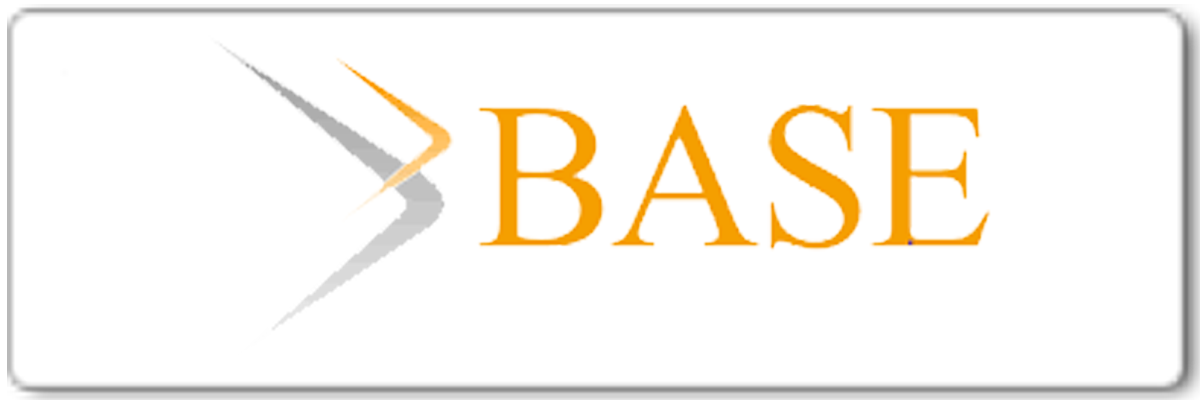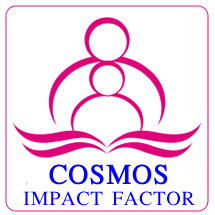Virtual Laboratory Based Guided Inquiry: Viscosity Exsperiments
Abstract
Keywords
Full Text:
PDF (English)References
Hofstein, A and Lunetta, V. N. (1982). The Role of the Laboratory in Science Teaching: Neglected Aspects of Research. Review of Educational Research, 52(2 ):201-217.
Forcino, F. L. (2013). The Importance of a Laboratory Section on Student Learning Outcomes in a University Introductory Earth Science Course. Journal Of Geoscience Education, 61, : 213–221.
Bajpai, M. (2013). Development conceps in physics through virtual lab exsperiment: An effectiveness study. An International Journal Of Education Technology, 3 (1): 43-50.
ÇAKIROĞLU, Ö . (2006). The Role And Significance Of The Physics Laboratories In Physics Education As A Teacher Guide. Hasan Ali Yücel Eğitim Fakültesi Dergisi, 3(2): 1-13.
Abdullah, A. G., Hakim, D. L., Auliya, M. A., et al. (2018). Low-cost and Portable Process Control Laboratory Kit.TELKOMNIKA, 16 (1): 232-240.
Potkonjak, V., Gardner, M., Callaghan, V., et al. (2016). Virtual Laboratories for Education in Science, Technology, and Engineering: a Review. Computers & Education, 95: 309-327.
Chien, K. P., Tsai, C. Y., Chen, H. L., Chang, W.H., & Chen, S. (2014). Learning differences and eye fixation patterns in virtual and physical science laboratories. Computers & Education, 82: 191-201.
Ambusaidi, A., Al Musawi, A., Al-Balushi, S., Al-Balushi, K. (2018). The Impact of Virtual Lab Learning Experiences on 9th Grade Students’ Achievement and Their Attitudes Towards Science and Learning by Virtual Lab. Journal of Turkish Science Education (TUSED), 15(2): 13-29.
Iovan,M., Surianu, F. D., & Matei, F.M. (2015). Virtual Laboratory for Power Quality Study.WCES 2014, Procedia - Social and Behavioral Sciences, 191: 2798-2802.
Domínguez, J. C., Miranda, R., González, E. J., Oliet, M., & Alonso, M. P. (2018). A virtual lab as a complement to traditional hands-on labs: Characterization of an alkaline electrolyzer for hydrogen production. Education for Chemical Engineers, 23: 7-17.
Chiu, J. L., DeJaegher, C. J & Chao, J. (2015). The Effects of Augmented Virtual Science Laboratories on Middle School Students’ Understanding of Gas Properties. Computers & Education, 85: 59-73.
Lamb, R., Antonenko, P., Etopio, E., Seccia, A. (2018). Comparison of virtual reality and hands on activities in science education via functional near infrared spectroscopy. Computers & Education, 124: 14-26.
Metcalf, S. J., Reilly, J. M., Kamarainen, A. M., King, J., Grotzer, T. A., and Dede, C. (2018). Supports for Deeper Learning of Inquiry-Based Ecosystem Science in Virtual Environments - Comparing Virtual and Physical Concept Mapping. Computers in Human Behavior, 87: 459-469.
Liu, D., Díaz, P. V., Riofrio, G., Sun, Y, Barba, R. (2015). Integration of Virtual Labs into Science E-learning. International Conference on Virtual and Augmented Reality in Education, Procedia Computer Science, 75: 95-102.
Murphy, M. D. (2016). A modular virtual laboratory for quadrotor control simulation. IFAC (International Federation of Automatic Control) Paper Online, 49 (6): 093-098.
Klentien, U. & Wannasawade, W. (2016). Development of blended learning model with virtual science laboratory for secondary students. Future Academy’s Multidisciplinary Conference, Procedia - Social and Behavioral Sciences, 217: 706 – 711.
Ambarsari,W., Santosa,S., & Maridi. (2013). The application of guided inquiry learning towards basic science process skills in biology learning for VII grade students of SMP N 7 Surakarta. JurnalPendidikanBiologi, 2(1): 81-95.
Wang, J., Guo, D., & Jou, M. (2015). A study on the effects of model-based inquiry pedagogy on students’ inquiry skills in a virtual physics lab. Computers in Human Behavior,49: 658-669.
Thiagarajan, S., Semmel, D. S & Semmel, M. I. (1974). Instructional Development for Training Teachers of Expectional Children. Minneapolis, Minnesota: Leadership Training Institute/Special Education, University of Minnesota.
Rizki, R. N. (2011). Utilization of virtual laboratories and e-references in the process of learning and research in chemistry. Jurnal PHENOMENON, 1(1): 115-123.
Singh, K. G. (2013). Virtual Learning Environment For Next Generation In Electronics & Telecommunications Course. International Journal Of Technological Exploration And Learning (IJTEL), 2(3): 1-5.
Herga, N. R., Grmek, M. I., Dinevski, D. (2014). Virtual laboratory as an element of visualization when teaching chemical contents in science class. The Turkish Online Journal of Educational Technology, 13(4): 157-165.
Gunawan, A. Harjono, & Sahidu, H. (2015). The development of virtual laboratory models is oriented towards problem solving skills for prospective physics teachers. Jurnal Materi dan Pembelajaran Fisika (JMPF), 5(2): 41-46.
Yusuf, I., & Subaer. (2013). Development of physics learning tools based on virtual laboratory media on the material of dualism wave at Tut Wuri Handayani High School Makasar. Jurnal Pendidikan IPA, UNNES, 2(2): 189-194.
Tatli, Z. & Ayas, A. (2013). Effect of virtual chemistry laboratory on students’ achievement. Journal of Educational Technology and Society, 16(1): 159-170.
Karagöz, O.,andSaka, A. Z. (2015). Development Of Teacher Guidance Materials Based On 7E Learning Method In Virtual Laboratory Environment. WCES 2014.Procedia - Social and Behavioral Sciences,191 ( 201: 810 – 827.
Zacharia, Z. C., and Olympiou, G. (2011). Physical versus virtual manipulative experimentation in physics learning. Learning and Instruction, 21: 317-331.
Sarabando, C., Cravino, J.P., &Soares, A. A. (2014). Contribution of a computer simulation to students’ learning of the physics concepts of weight and mass. Procedia Technology, 13: 112-121.
İnce, E., Güneş, Z. O., Yaman, Y., Kırbaşlar, F. G., Yolcu, O., Yolcu, E. (2015). The Effectiveness of the IUVIRLAB on Undergraduate Students’ Understanding of Some Physics Concepts.WorldConference on Technology, Innovation and EntrepreneurshipProcedia - Social and Behavioral Sciences, 195: 1785-1792.
Suleman, Q., Ishtiaq, H., &Naseer-ud-din, M. (2013). Role of instructional technology in enhancing student’ educational attainment in general science at elementary level in district karak (Pakistan). Journal of Sociological Research, 4(1): 83-98.
Gunawan, A. Harjono, Sahidu, H., &Herayanti, L. (2017). Virtual laboratory of electricity concept to improve prospective physics teachers creativity. Jurnal Pendidikan Fisika Indonesia, 13(2): 102-111.
AKTAMIŞ, H., HİĞDE, E, & ÖZDEN, B. (2016). Effects of the Inquiry-Based Learning Method on Students’ Achievement, Science Process Skills and Attitudes towards Science: A Meta-Analysis Science. Journal of Turkish Science Education (TUSED), 13(4): 249-261.
DOI: http://dx.doi.org/10.26737/jipf.v4i2.1069
Refbacks
- There are currently no refbacks.
Copyright (c) 2019 Wawan Kurniawan, Jufrida Jufrida, Fibrika Rahmat Basuki, Rima Ariani, Olva Fitaloka

This work is licensed under a Creative Commons Attribution-NonCommercial 4.0 International License.
Publisher
Institute of Managing and Publishing of Scientific Journals
STKIP Singkawang
Jl. STKIP, Kelurahan Naram, Kecamatan Singkawang Utara, Kota Singkawang, Kalimantan Barat, Indonesia
Website: http://journal.stkipsingkawang.ac.id/index.php/JIPF
Email: [email protected]
JIPF Indexed by:
Copyright (c) JIPF (Jurnal Ilmu Pendidikan Fisika)
ISSN 2477-8451 (Online) and ISSN 2477-5959 (Print)































